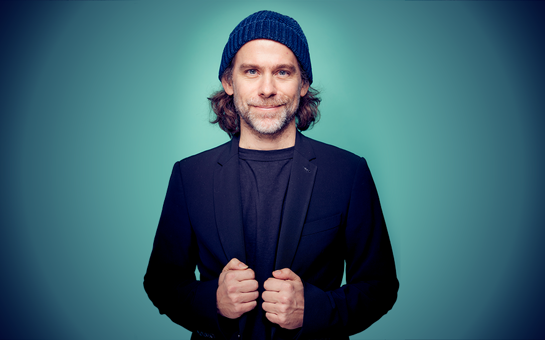- Bryce Dessner
Piano Concerto (2023)
- Chester Music Ltd (World)
Commissioned by Tonhalle-Gesellschaft Zürich AG, Orchestre Philharmonique de Radio France, Southbank Centre and Philharmonia Orchestra, Cincinnati Symphony Orchestra, Deutsches Symphonie Orchester Berlin and Munich Philharmonic Orchestra, and Ars Musica Brussels with the support of Bozar, Philzuid Netherlands and Brussels Philharmonic.
- pf + 1(pic).1+ca.2(II:bcl).1/4.1.3.1/timp.3perc/hp/str
- Piano
- 20 min
Programme Note
I spent most of 2023 composing my new piano concerto for Alice Sara Ott. The piece is very much inspired by her beautiful playing, and I wanted to write something that would both challenge her and draw out her unique qualities as an artist. I am truly grateful to her for working so closely with me on the concerto. As I wrote the music I was also thinking of the sound of the Tonhalle and the other wonderful orchestras who have commissioned the piece.
I composed and dedicated this work to my sister Jessica Reese Dessner. My sister, who is an exceptional artist, has been my greatest inspiration since I was very young, and she has been a huge artistic influence on me and my brother Aaron. For several years she has been courageously battling cancer and has continued to inspire me as she confronts this health crisis with courage and grace. As kids I learned so much about art and music from her, and we have collaborated on many projects together over the years. Each movement of my piano concerto takes direct inspiration from my sister, her life, and her artistic practice.
The three movements of the concerto each had a working title during the months I was composing which reflect specific sources of inspiration I learned from my sister. The first movement is called HOW TO DANCE. So many of my early memories of orchestral music are from watching my sister dance in the Cincinnati Ballet as a child. Much of the music that I love was originally written to be danced to (Stravinsky, Tchaikovsky, Cage, Reich). Later through her, I discovered contemporary music through the vibrant dance scene of New York city where I saw works by Merce Cunningham, William Forsyth, Pina Bausch and Anne Teresa de Keersmaeker. My sister, who had a long career as a choreographer and modern dancer, and I created several works together in the late 90s and early 2000s which would be fundamental to my development as a composer and I believe that all of my written music is influenced by her choreographic sense.
The fluid motion and physicality of dance influences much of my music and this first movement has a baroque dance feel throughout. The bass line which is the central melody of the first movement turns around like a baroque continuo- and the ostinato patterns in the right hand are light and floating - tracing the arc of a dancer’s motion.
The second movement is titled ‘HOW TO BREATH’ and it has a gentle quality and stillness in the music. In the relentless rush of life and career my sister has always encouraged me to find calm and to breathe, and to take things slowly and re-connect to the fundamental beauty of making art. This music comes from a natural place, and gives a sensation of emerging from the sea or the forest. The notes are spare and then layered and fast, but always with a sense of breath. The orchestra provides various horizons, brass giving way to the winds and strings shifting perspectives. Moments of dissonance or interruption create a counterpoint to the soloist.
The third movement and finale which I have called “HOW TO FEEL” is the most varied of the three and is also the most virtuosic. It returns to the dance like motion of the first movement but with more intensity. The material shifts between lyrical slower moments and then the intense joyful patterns of the faster sections. The music, as with the other movements is deeply inspired by my sister and the title says it all.
- Bryce Dessner
Scores
Reviews
More Info

- A busy season ahead for Bryce Dessner
- 17th September 2025
- 2025-26 is filled with composer residencies, world premieres and soundtrack releases for Bryce Dessner.

- Bryce Dessner – Composer in Residence at Konzerthaus Berlin 2025/26
- 1st September 2025
- Bryce Dessner will be Composer in Residence at Konzerthaus Berlin for the upcoming 2025/26 season.

- Bryce Dessner, Ars Musica 2024 guest of honour
- 11th November 2024
- Dessner’s music will be highlighted in three exciting performances at Brussel's Ars Musica festival this month.

- A fantastic pair of concerti from one of today’s busiest composers
- 8th November 2024
- Bryce Dessner's Piano and Violin Concertos to be performed across Europe in the coming weeks.

- Bryce Dessner’s Cincinnati Homecoming
- 2nd May 2024
- On May 3-4 2024, Bryce Dessner returns to his hometown of Cincinnati, OH for three performances of recent works by the Cincinnati Symphony Orchestra.

- UK premiere of Dessner's Piano Concerto
- 7th February 2024
- UK Premiere of Bryce Dessner’s piano concerto to be given by Alice Sara Ott on Feb 15.

 Located in the UK
Located in the UK
 Located in the USA
Located in the USA
 Located in Europe
Located in Europe